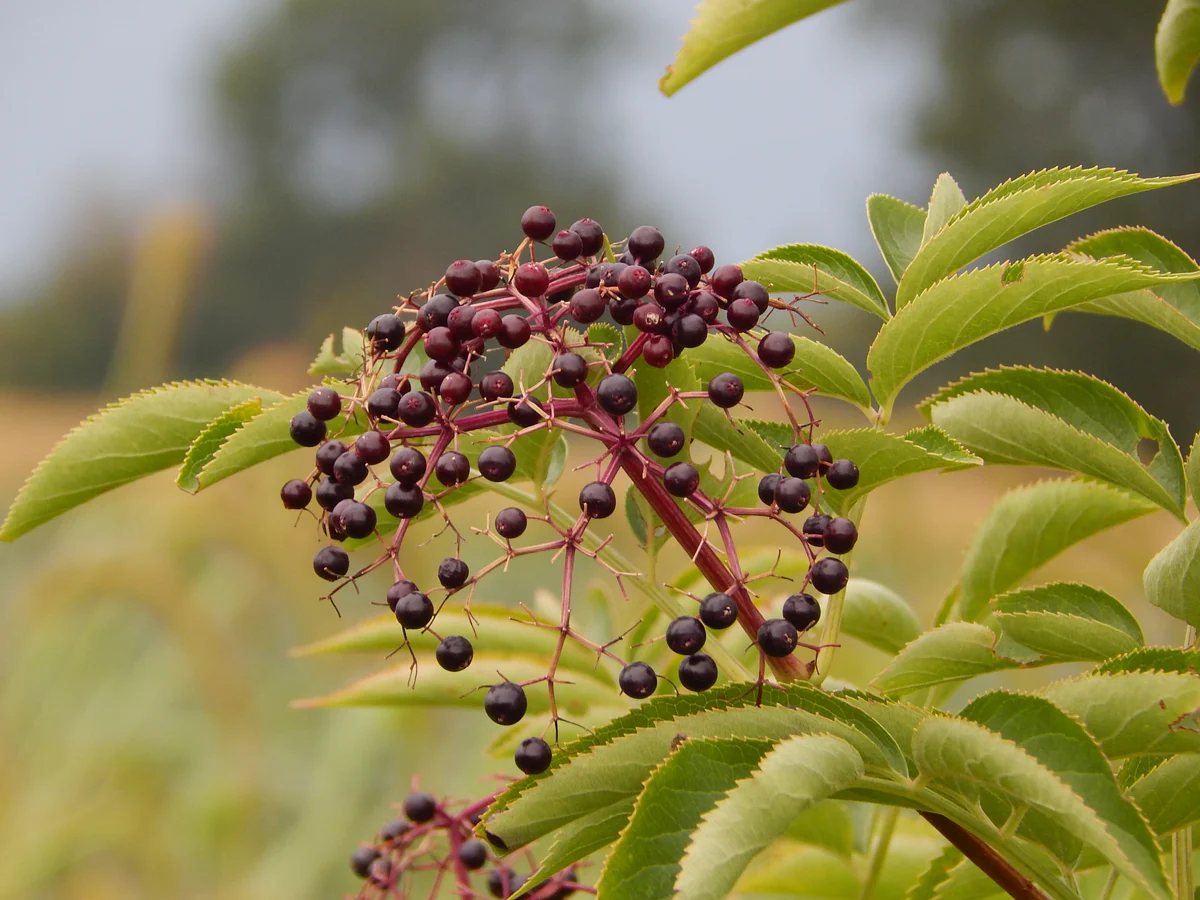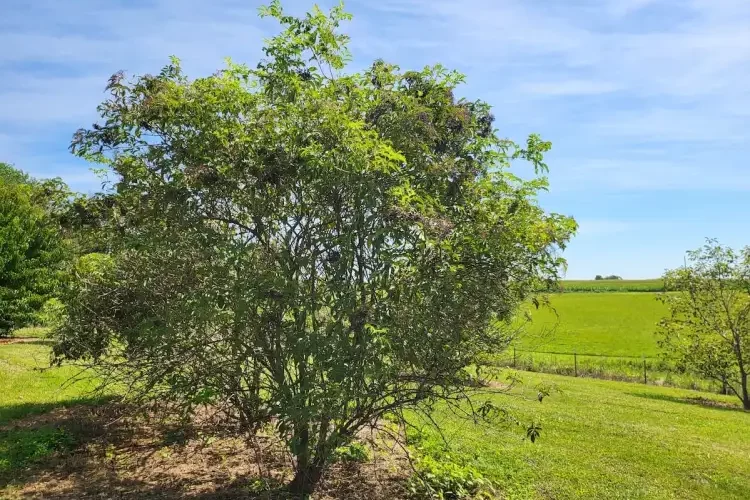Elderberry bushes, scientifically known as Sambucus nigra, are prized for their ornamental beauty, delicious berries, and potential health benefits. Proper care is essential to ensure the health and vitality of elderberry bushes, whether they are grown for landscaping purposes or for harvesting berries. In this comprehensive guide, we’ll explore the best practices for caring for elderberry bushes, drawing upon insights from governmental and horticultural bodies, as well as academic experts.
Understanding Elderberry Bushes
Elderberry bushes belong to the genus Sambucus and are native to Europe, North Africa, and Western Asia. They are deciduous shrubs that typically grow 5 to 12 feet tall and produce clusters of small, white flowers in the spring, followed by dark purple or black berries in the late summer or early fall. Elderberries are rich in antioxidants, vitamins, and minerals, making them a valuable addition to any garden or landscape.

Selecting the Right Location
Elderberry bushes thrive in full sun to partial shade and prefer moist, well-drained soil. When selecting a location for planting elderberry bushes, choose a spot that receives at least 6 hours of sunlight per day and has good air circulation. Avoid planting elderberries in low-lying areas where water tends to collect, as they are susceptible to root rot in waterlogged soil.
Planting Elderberry Bushes
Before planting elderberry bushes, it’s essential to prepare the soil by incorporating organic matter such as compost or aged manure to improve drainage and fertility. Elderberry bushes are typically propagated from hardwood cuttings or nursery-grown plants. Plant elderberry bushes in the spring or fall, spacing them 6 to 10 feet apart to allow for adequate airflow and future growth. Dig a hole slightly larger than the root ball and backfill with soil, ensuring that the plant is planted at the same depth as it was in the nursery container.
Watering and Fertilizing
Elderberry bushes have moderate water requirements and prefer consistently moist soil, especially during the growing season. Water newly planted elderberry bushes regularly to establish a strong root system, and continue to provide supplemental water during dry periods. Avoid overwatering, as elderberry bushes are susceptible to root rot in soggy soil. In terms of fertilization, apply a balanced fertilizer in the spring before new growth emerges, following the manufacturer’s recommendations for dosage and application.
Pruning and Maintenance
Regular pruning is essential for maintaining the health and productivity of elderberry bushes. Prune out any dead, diseased, or damaged branches as soon as they are noticed to prevent the spread of pests and diseases. Additionally, prune older branches to promote new growth and improve airflow within the canopy. Elderberry bushes produce fruit on one-year-old wood, so it’s essential to encourage the growth of new branches each year by selectively pruning older branches.
Pest and Disease Management
Elderberry bushes are relatively low-maintenance plants, but they can be susceptible to certain pests and diseases. Common pests that may affect elderberry bushes include aphids, spider mites, and borers, while diseases such as powdery mildew and bacterial leaf spot can also occur. Monitor elderberry bushes regularly for signs of pest infestations or disease symptoms, and take appropriate action if problems arise. This may include applying insecticidal soap or neem oil for pest control or using fungicides to manage fungal diseases.
Harvesting Elderberries
Elderberries typically ripen in late summer or early fall, depending on the climate and growing conditions. Harvest elderberries when they are fully ripe and have turned dark purple or black in color. Use scissors or pruners to cut entire clusters of berries from the bush, taking care not to damage the branches. Elderberries can be used fresh or dried for later use in recipes such as jams, jellies, syrups, and teas.
Conclusion
Caring for elderberry bushes requires attention to detail and a proactive approach to maintenance. By selecting the right location, planting correctly, providing adequate water and nutrients, pruning regularly, and monitoring for pests and diseases, you can ensure the health and productivity of your elderberry bushes for years to come. With proper care, elderberry bushes can not only enhance the beauty of your landscape but also provide a bountiful harvest of delicious and nutritious berries.
What is the best time to plant elderberry bushes?
The best time to plant elderberry bushes is in the spring or fall when the weather is cooler and the bushes can establish their root systems before the onset of harsh conditions.
How much sunlight do elderberry bushes need?
Elderberry bushes thrive in full sun to partial shade, preferring at least 6 hours of sunlight per day for optimal growth and berry production.
How often should I water my elderberry bushes?
Elderberry bushes prefer consistently moist soil, especially during the growing season. Water newly planted bushes regularly to establish a strong root system, and continue to provide supplemental water during dry periods.
Do elderberry bushes require pruning?
Yes, regular pruning is essential for maintaining the health and productivity of elderberry bushes. Prune out any dead, diseased, or damaged branches, and selectively prune older branches to promote new growth and improve airflow within the canopy.
Are elderberry bushes susceptible to pests and diseases?
While elderberry bushes are relatively low-maintenance, they can be susceptible to pests such as aphids, spider mites, and borers, as well as diseases like powdery mildew and bacterial leaf spot. Monitoring for signs of infestation or disease and taking appropriate action is key to managing these issues.
How do I fertilize my elderberry bushes?
Apply a balanced fertilizer in the spring before new growth emerges, following the manufacturer’s recommendations for dosage and application. Avoid over-fertilizing, as this can lead to excessive vegetative growth at the expense of berry production.
Can I grow elderberry bushes in containers?
While elderberry bushes prefer to be planted directly in the ground, they can be grown in large containers if necessary. Choose a container with adequate drainage holes and use a high-quality potting mix to ensure proper drainage and root health.
When is the best time to harvest elderberries?
Elderberries typically ripen in late summer or early fall, depending on the climate and growing conditions. Harvest the berries when they are fully ripe and have turned dark purple or black in color.
How do I propagate elderberry bushes?
Elderberry bushes can be propagated from hardwood cuttings taken in the winter or early spring. Select healthy, disease-free branches and cut them into 6 to 8-inch sections, then plant them in well-draining soil and keep them moist until they establish roots.
Can I prune elderberry bushes in the winter?
While elderberry bushes can be pruned in the winter when they are dormant, it’s generally best to wait until the spring after the risk of frost has passed. This allows the bushes to recover quickly and encourages new growth in the coming season.
- Tennessee’s THC Beverage Market - June 5, 2025
- Top THC Infused Seltzers in Delaware - June 5, 2025
- Florida’s Hottest THC Infused Beverages - May 28, 2025
Tagged in:
Elderberry BushesAbout the Author
Charles Wilson
Charles Wilson, the Garden Harmony Maven behind this site, is a maestro in creating synchronized symphonies of flora. With a keen eye for balance and beauty, Charles shares his expertise on designing gardens that harmonize with nature and bring tranquility to outdoor spaces. His site is a source of inspiration for those looking to create lush and balanced landscapes that evoke a sense of peace and serenity.
View All Articles



